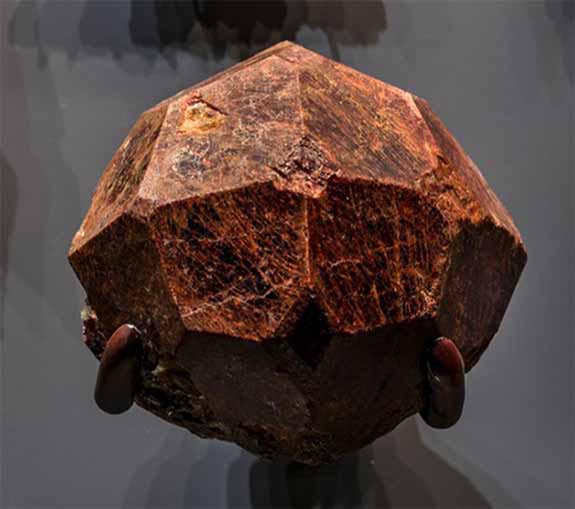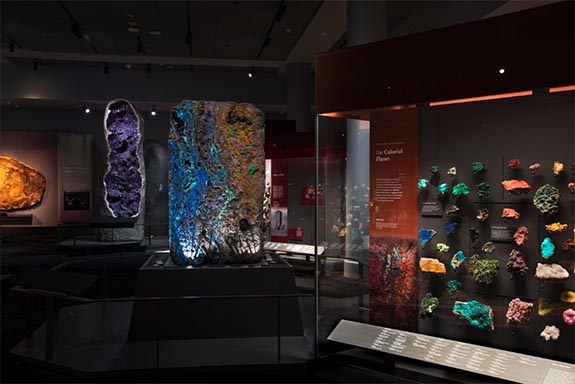After being out of the public eye for more than four decades, the "Subway Garnet" is once again the pride of Manhattan.
When the American Museum of Natural History unveiled its completely redesigned, 11,000-square-foot Mignone Halls of Gems and Minerals in June of 2021, visitors were encouraged to see the 9 pound 10 ounce reddish-brown crystal of the almandine garnet that had been discovered under Manhattan’s 35th Street in 1885.
(Garnet in all of its varieties — almandine, pyrope, spessartine, grossular and andradite — is the official birthstone for January.)
The Subway Garnet's return to star status reflected a remarkable change of fortune for the unusual specimen. Back in 1968, it had been a top attraction, displayed proudly at the entrance to the museum's Gems and Mineral Hall. Then, sadly, the excitement faded and the Subway Garnet was relegated to a storage drawer on the museum's fourth floor. There it remained, unseen, for nearly 40 years.
The unglamorous — and confusing — history of the Subway Garnet dates back to 1885 when it was discovered by a city worker near the corner of 35 Street and Madison Avenue in New York City. The original story claimed that the stone emerged during the excavation of the New York City subway system. But, those early accounts didn't hold water.
You see, the New York City subway officially broke ground in 1900, 15 years after the discovery of the Subway Garnet. It was much more likely that odd-looking stone with 24 natural facets was found during a sewer excavation. Perhaps, the name “Sewer Garnet” didn’t carry the right ambience for the rare gem.
The New York Times added clarity to the legend in a 2016 article. The publication reported that the massive crystal was, in fact, found eight feet underground during a sewer excavation in August of 1885. At that time, William Niven, the owner of a business that sold gemstones and minerals, claimed that he picked up the garnet as he was passing by the site, just after an unnamed laborer dumped it on the street during the excavation. Dr. Niven then sold it for $100 to mineralogist George F. Kunz.
George Harlow, the then-Curator for the Earth Sciences Department at the museum, told The New York Times in 2016 that he hoped the Subway Garnet would once again see the light of day and regain its old luster.
“Nothing’s been finalized, but I believe plans are afoot,” Harlow said. “I’d certainly like to see it available to the public before I retire.”
Harlow, who has been with the museum for more than 40 years and now holds the title of Curator Emeritus, Department of Earth and Planetary Sciences, Division of Physical Sciences, got his wish in 2021. The seven-inch-wide stone, which has been comically described as Fred Flintstone's bowling ball, is now the highlight of the museum's Minerals of New York display featuring specimens from all five of the city's boroughs.
Credits: Images by D. Finnin/© American Museum of Natural History.


